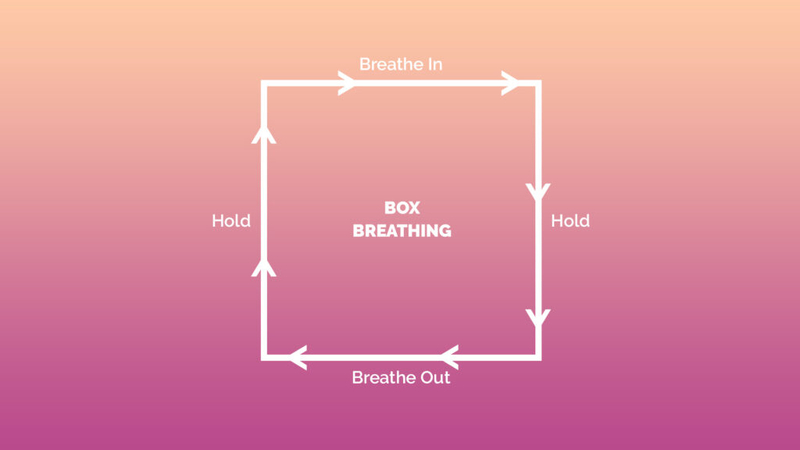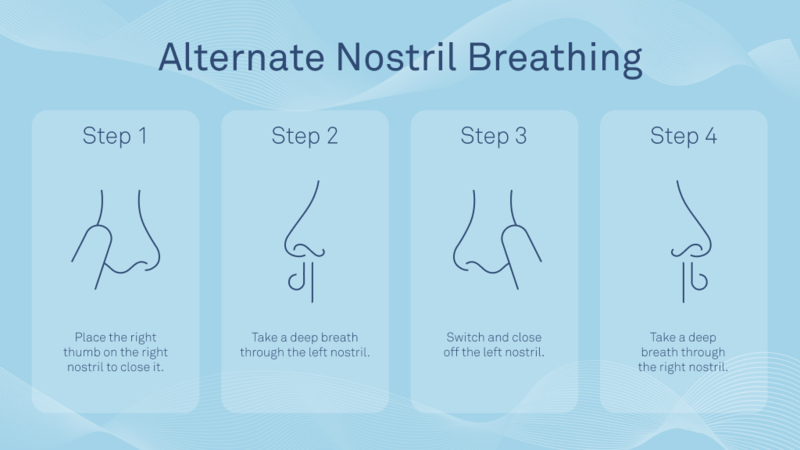Modern life's relentless pace frequently bombards us with high stress levels, which adversely affect our overall well-being. The connection between stress and breathing habits proves crucial. Stress instigates a 'fight or flight' response. A physiological alteration that directly impacts our patterns of respiration. Chronic stress induces shallow and rapid breathing, which directly contributes to sleep disturbances. Mastering the management of these respiratory patterns emerges as a potent tool for reducing stress and enhancing sleep quality.
1. Diaphragmatic Breathing
Engaging in diaphragmatic breathing, also known as abdominal or deep breathing, is a foundational relaxation technique. It significantly boosts not only your intake of oxygen but also activates the body's innate response to unwind. The process involves deep inhalation through the nose. This allows for expansion in abdomen size, and then exhaling a slow release via pursed lips. Enhancing respiratory efficiency, this process fosters improved sleep and reduces stress. The emphasis on engaging the diaphragm guarantees a fuller breath, an action that promotes an encompassing calmness throughout the body.
Beyond stress reduction, diaphragmatic breathing confers additional physiological benefits. It enhances the respiratory system's efficiency, a pivotal aspect in oxygenating blood and expediting carbon dioxide removal. This practice bolsters overall lung function. Moreover, by facilitating relaxation, it augments the body's innate ability to unwind. Incorporate diaphragmatic breathing into your routine. Be mindful of the consistent expansion and contraction of your abdomen. This ensures a harmonious flow of breath. Such nurturance not only bolsters physical well-being but also fortifies mental health, an integral part of maintaining overall equilibrium.
- Consideration: Focus on the alignment of your spine during diaphragmatic breathing, maintaining good posture to maximize the effectiveness of each breath.
- Caution: If you have respiratory conditions, consult with a healthcare professional before beginning diaphragmatic breathing exercises.
2. Box Breathing

Athletes and mindfulness enthusiasts popularize box breathing, a rhythmic technique that aims to restore equilibrium in the body and mind. It operates on an inhalation for four counts, holds the breath equally for another four counts, and exhales comprehensively over yet another set of four counts before pausing finally, again, for a count of four. Directly engaging the parasympathetic nervous system with this balanced approach promotes not just relaxation but also instills profound calmness within its practitioner. Box breathing's intentional and controlled nature instills a structured rhythm. this strategic approach shatters the cycle of stress and anxiety.
Box breathing yields cognitive benefits. Beyond merely reducing stress, this practice cultivates enhanced concentration and mental clarity. The deliberate focus demanded during each phase of the breath, in particular the extended pauses at inhalation and exhalation, intensifies awareness. It serves not only as a tool for stress management but also as an active mindfulness exercise that grounds your attention in present moments while fostering tranquility within oneself.
- Fact: Box breathing is also known as "combat breathing" and has been utilized by military personnel to manage stress in high-pressure situations.
- Consideration: Practice box breathing in a quiet, comfortable space to enhance its effectiveness in promoting relaxation.
3. 4-7-8 Technique
Dr. Andrew Weil developed the potent 4-7-8 technique to pacify the nervous system and instigate a state of tranquility. It initiates with an individual assuming a comfortable seated or reclining position. The process then unfolds as follows. One inhales silently through their nose, maintaining this action for precisely four counts. Subsequently, without interrupting that breath, they hold it (the inhalation) for seven consecutive beats before finally releasing all air audibly via an eight-count exhale from their mouth. The 4-7-8 technique, with its ability to promote relaxation and reduce stress through regulating breathing in a rhythmic pattern, offers more than just stress management. It fosters profoundly rejuvenating sleep when practiced regularly.
This technique, with its calming effects, proves invaluable to individuals grappling with insomnia. They focus on specific breath counts, a mental anchor that redirects attention from racing thoughts and worries. This facilitates a seamless transition into sleep. It is an indispensable aid for those struggling to find rest.
- Fact: Dr. Andrew Weil recommends practicing the 4-7-8 technique twice a day for optimal results.
- Consideration: If you have respiratory or cardiovascular issues, consult with a healthcare professional before adopting the 4-7-8 technique.
4. Alternate Nostril Breathing
Nadi Shodhana, also known as Alternate Nostril Breathing, constitutes a traditional yogic technique. Its design aims to balance the body's energy flow. To perform this practice, sit in comfort. Employ your right thumb to seal off inhalation through the right nostril while you breathe in via your left nostril. As for exhalation, utilize your ring finger on the right hand/ This will close down access for any air escape from one's left nasal passage and allow only unobstructed outflow via our dominant side, namely, that which we use predominantly in everyday tasks or functions such as writing with penmanship. Continue this pattern. Alternate your nostrils. This practice, by synchronizing the brain's hemispheres, promotes mental clarity, reduces stress, and facilitates superior sleep.

Alternate nostril breathing not only offers immediate benefits but also enhances focus and concentration. The deliberate switch between nostrils stimulates a balanced cognitive state by engaging both brain hemispheres. As you integrate this technique into your routine, perceive it as more than just a stress-reduction tool. View it as an alignment practice for holistic well-being, harmonizing mind with body.
- Fact: Alternate nostril breathing is believed to cleanse and purify the energy channels in the body, promoting a sense of harmony.
- Caution: If you experience dizziness or discomfort, ease into this practice gradually, and discontinue if symptoms persist.
5. Resonant Breathing
Maintaining a steady breathing rate to synchronize with the heart rate. This is resonant breathing, otherwise known as coherent breathing. Typically, individuals adopt an approach of inhaling and exhaling for six breaths per minute. This aligns their rhythmic pattern in accord with that of their heart's natural resonance. This is a practice that fosters states of calmness. Researchers have linked the regular practice of resonant breathing to a reduction in stress and an enhancement of sleep quality.
Resonant breathing, in addition to managing stress, positively influences heart rate variability (HRV). This is an indicator of the body's capacity to adapt to stress. A robust overall health correlates with elevated HRV. This suggests that by synchronizing breath and heart rate, a process known as resonant breathing, we enhance adaptability.
- Fact: Resonant breathing is a key component of heart coherence, a state associated with improved emotional well-being.
- Consideration: It's advisable to practice resonant breathing in a quiet environment to fully experience its calming effects.
Conclusion
Incorporate these breathing exercises into your daily routine. They can significantly impact not only your stress levels but also the quality of sleep you experience. The connection between stress and breathing habits underscores the vital role that mindful breathing plays in overall well-being. By embracing such techniques, one empowers oneself to navigate life's challenges with a calm mind, an essential tool for success, and enjoy restful rejuvenation at night. Prioritize the simple yet profound act of mindful breathing today to initiate your journey toward enhanced health.







